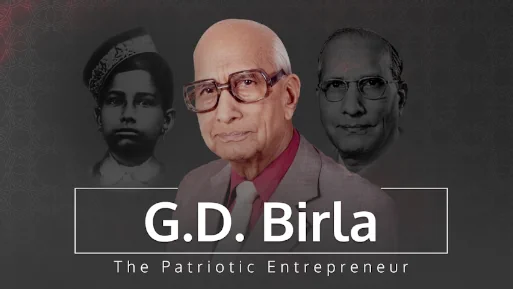Birla makes a style statement
11 May, 2015 | The Financial Express
ShareWhile the Madura-Pantaloons merger will improve margins, the Aditya Birla Group will have to focus on its online shopping portal to prevent e-commerce players from turning its brands into discounted ones.
Devangi Gandhi
The Financial Express
11 May 2015
Kumar Mangalam Birla clearly loves shopping, but perhaps more for companies than clothes or accessories.
"There is no doubt that brick and mortar retailing will get impacted by the e-commerce platforms in future but it's not going away. Growth rates may slow down due to the emergence of e-commerce."
— Kumar Mangalam Birla, Chairman, AV Birla Group
The 47-year old industrialist has made a slew of acquisitions across the $40 billion Aditya Vikram Birla Group (AV Birla group)—whether cement, aluminium, telecom or retail. Birla clearly believes the buyouts bring the business momentum and he’s probably right. They also bring brands, customers and technology. And while not all of them might yield the expected synergies, it’s not for want of trying.
In the latest attempt to extract value from an acquisition, Aditya Birla Nuvo operated fashion retailing business, Madura Fashion and Madura Lifestyle (MF&;L) has been merged into Pantaloons Fashions &Retail (PFRL) — Future Retail’s branded apparel business acquired a couple of years back. Post the restructuring, PFRL will be r;enamed as Aditya Birla Fashion &Retail and will have a chain of 1840 stores across India. For the first nine months of fiscal 2014-15 (FY15), the combined entity reported revenue of Rs 4,047 crore.
To be sure, the exercise is aimed at simplifying the structure of the group’s fashion retail businesses by bringing them under one entity; the food and groceries piece More will stay out. With this demerger exercise, the shareholders of ABNL which currently own 72.6% in PFRL are set to get 26 shares of the new entity.
Birla said in a media interaction post the announcement that investors had been asking for such a restructuring probably because the re-alignment will reduce the holding company discount that arises because the venture was housed in Aditya Birla Nuvo. As analysts point out, the cost synergy benefits will boost margins.
Moreover, it will bring clarity on allocation of capital and the firm’s debt profile. Most important, as Kishore Biyani, managing director, Future Retail, points out, there will be enormous savings on costs especially on the procurement side. Indeed, the scale itself will throw up cost synergies. Birla himself brushed aside concerns on PFRL’s losses, asserting that the creation of the country’s largest branded apparel retail company would throw up lots of synergies.
PFRL was a loss-making entity prior to the merger and reported a loss of Rs.187.7 crore in FY14. While it boasted capital allocation of Rs.1,630 crore, three times that for MF&;L, PFRL reported an earnings before income and tax (EBIT) loss of Rs.75 crore . However, MF&;L that houses premium apparel brands like Louis Phillipe, Van Heusen, Allen Solly and Peter England, reported an EBIT of Rs.299 crore, in FY14, or a margin of 9%.
| Rs (cr) | Madura F &L | Pantaloons F &R |
| Revenue | 3226 | 1,661 |
| EBITDA | 388 | 39 |
| Segment EBIT | 299 | -75 |
| Capital employed | 457 | 1,630 |
| Debt | - | 1,050 |
| EBITDA margin (%) | 12.03 | 2.35 |
| ROACE (%) | 64 | |
| Source: FY14 annual report | ||
As of FY14, PFRL carried a net debt of Rs.1050 crore on its books. After the restructuring, another Rs.473 crore of net debt is to be added to the balance sheet of the combined entity. Notwithstanding, the cash-flow generation of MF&;L, post the transaction the retail arm is still likely to have a debt to Ebitda ratio greater than 2.
The management has indicated an investment of Rs.450-500 crore every year, for the next three years, to add 250-300 stores of Madura Garments and 35 stores of Pantaloons. Stores will be opened in tier 2 and tier 3 cities and also in the metros.
But even as stores are rolled out, the management may also focus on e-retailing on its online shopping portal—trendin.com for in-house brands. Birla is not in favour of hawking his products on other sites and is against heavy discounting which he feels will destroy his brands. “We don’t want our brands to become discounted brands. If higher discounts continue, we will stop selling on e-commerce platforms,” he asserts.
While that seems logical, and there is little doubt Birla’s brands are strong, customers today want variety. Also, as a market watcher points out, entry barriers are high—it takes years to build a brand—and it must be remembered that high-end customers today do have access to a host of foreign brands too, partly because they travel extensively. According to Rachna Nath, leader- retail, PwC India, although lower prices do attract consumers, given that the price of a product is perceived to reflect its brand value, organised offline players are reluctant to discount.
Nevertheless, if Birla is confident he can sustain sales without discounting products, he should stay with the strategy. Acknowledging that the brick and mortar players will be impacted by the growing sales of e-commerce players, KM Birla said the impact on his business will be minimal since the brands, in each segments, are firmly entrenched. “There is no doubt that brick and mortar retailing will get impacted by the e-commerce platforms in future but it’s not going away. Growth rates may slow down due to the emergence of e-commerce,” he said.
At a time when e-commerce players are eating into the market share of retailers by offering unimaginable discounts, however, Birla needs to keep abreast of trends in the space; apparel is, after all, one of the largest e-commerce categories.






